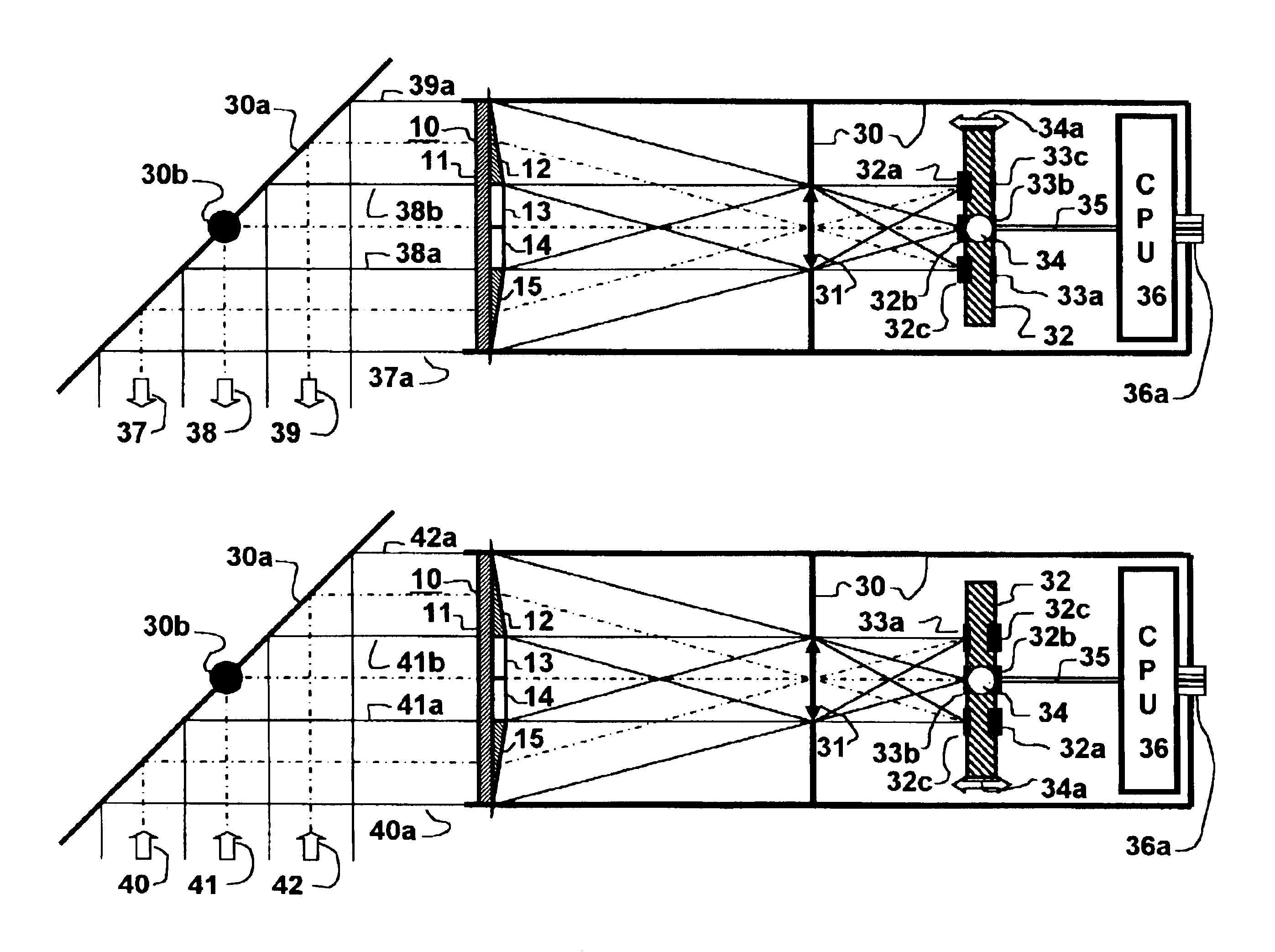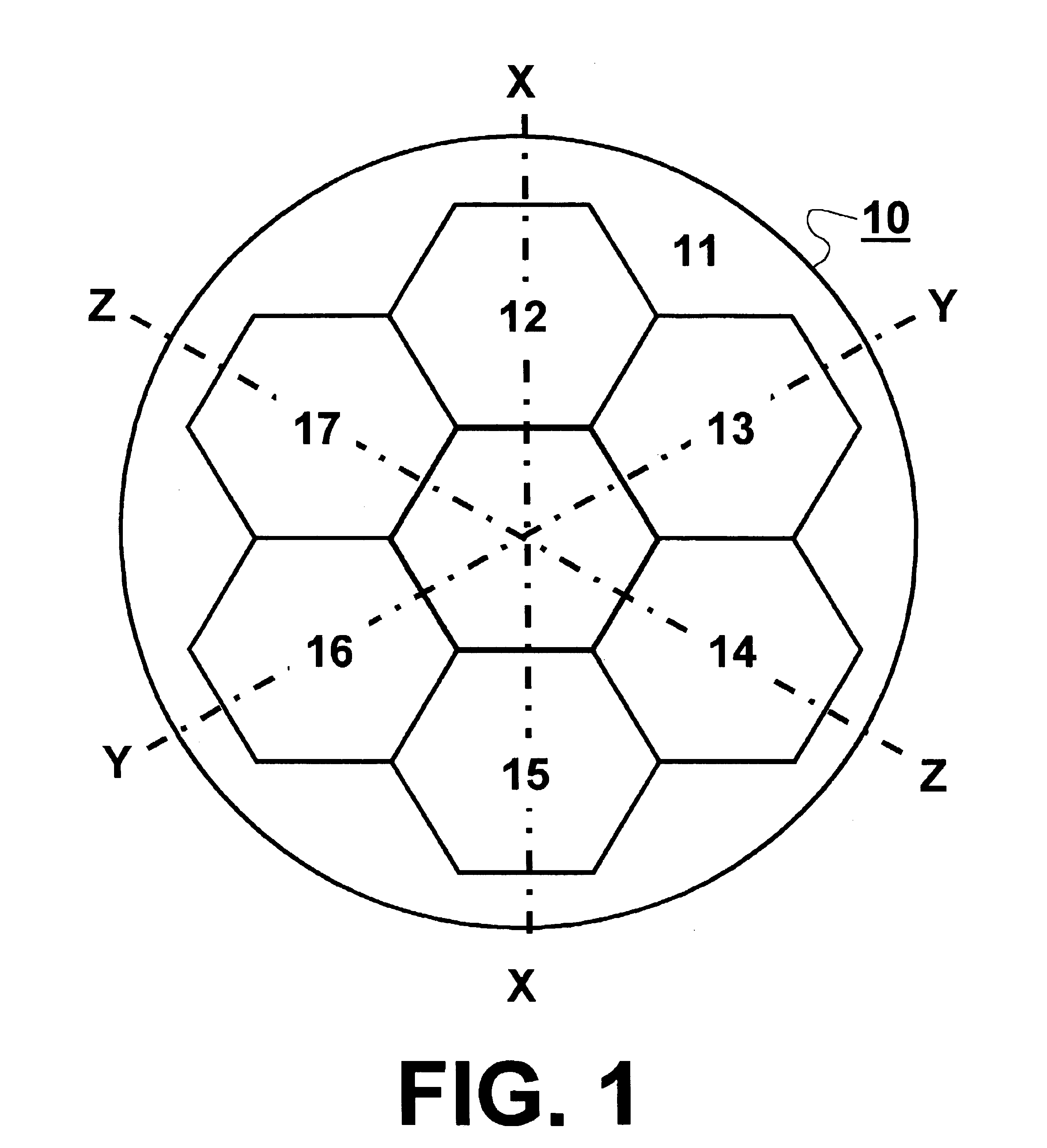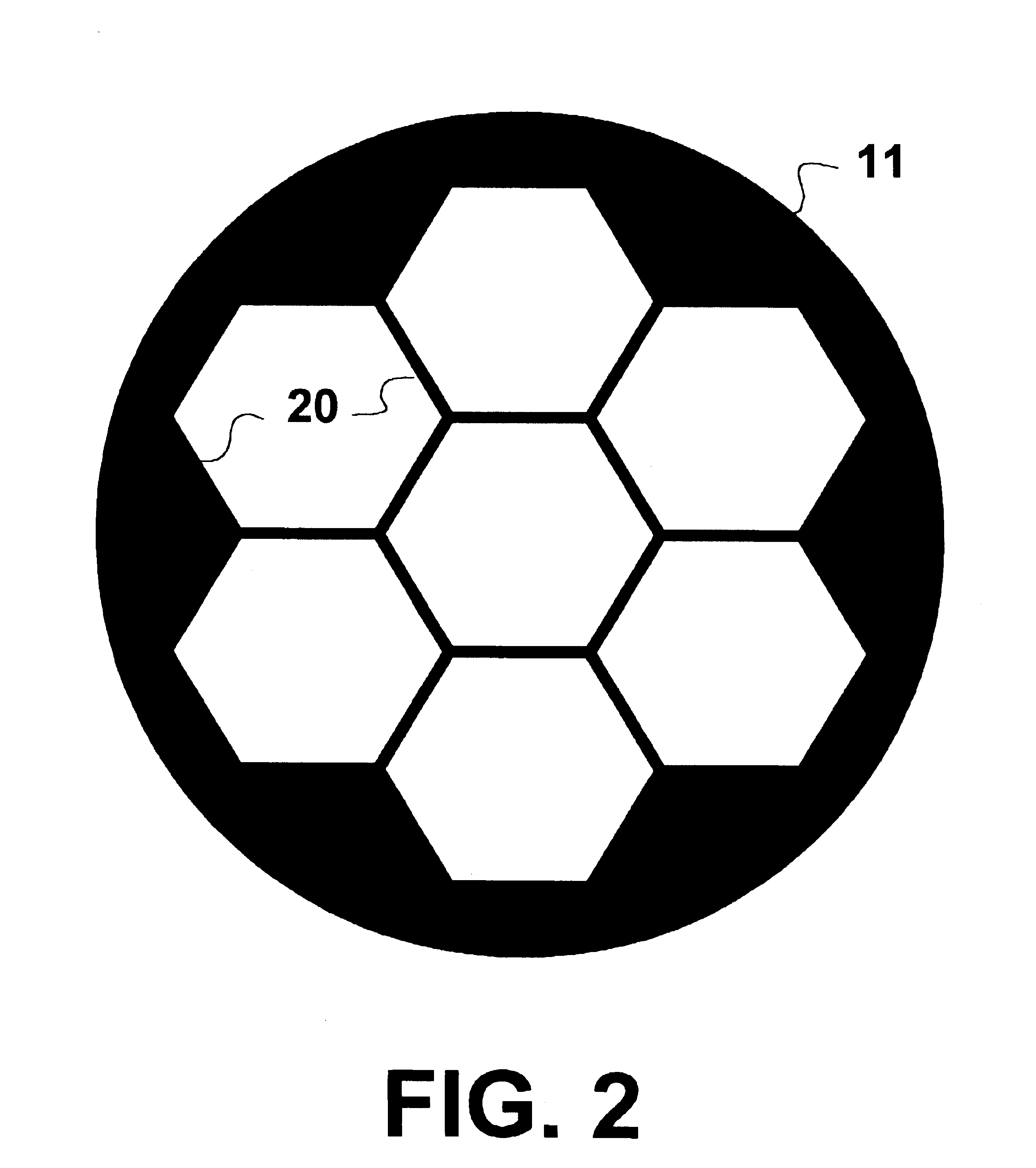Image integration and multiple laser source projection
a laser source and integrated technology, applied in the field of image integration and multiple laser source projection, can solve the problems of limiting the allowed aperture dimension and overall design complexity, no system now available allows for the combination of the various functions required, and reducing the cost of reradiation
- Summary
- Abstract
- Description
- Claims
- Application Information
AI Technical Summary
Benefits of technology
Problems solved by technology
Method used
Image
Examples
Embodiment Construction
The invention described herein provides a method and apparatus for improving the efficiency of target sensor and / or designator devices. The sensor devices may be level sensitive photo-diodes used as pixel detectors in electro-optical imaging devices or the less discriminating, but more sensitive photo-multiplier type Infrared Search and Track (IRS&T) sensors, which detect and display distant targets as a moving points. Both photo-diodes and laser diodes are inherently small, so that thousands can be placed on a one-inch square substrate with their photo-active surfaces defining a focal plane. Larger devices that are more sensitive or powerful can be coupled through a bundle of optical glass fibers the ends of which define a similarly small area of a focal plane.
There is described herein a sensor resolution enhancement scheme that does not sacrifice time resolution, but simultaneously and optically projects several identical narrow fields of view (NFV)s onto a system focal plane that...
PUM
 Login to View More
Login to View More Abstract
Description
Claims
Application Information
 Login to View More
Login to View More - R&D
- Intellectual Property
- Life Sciences
- Materials
- Tech Scout
- Unparalleled Data Quality
- Higher Quality Content
- 60% Fewer Hallucinations
Browse by: Latest US Patents, China's latest patents, Technical Efficacy Thesaurus, Application Domain, Technology Topic, Popular Technical Reports.
© 2025 PatSnap. All rights reserved.Legal|Privacy policy|Modern Slavery Act Transparency Statement|Sitemap|About US| Contact US: help@patsnap.com



